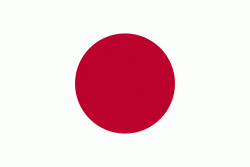Akitakata (Aki-takata Shi)
Akitakata (安芸高田市) is a city located in north-central Hiroshima Prefecture, Japan.
As of April 1, 2011, the city has a population of 31,565, with 13,223 households and a population density of 59 persons per km². of The total area is 538.17 km².
The modern city of Akitakata was established on March 1, 2004, from the merger of the towns of Kōda, Midori, Mukaihara, Takamiya, Yachiyo and Yoshida (all from Takata District). Therefore, Takata District was dissolved as a result of this merger.
It is a mountainous farming area known for many traditional events as well as certain food products.
One such food product is Ebisu tea, a sweet fragrant tea, that comes from Mukaihara Town. Another is yuzu juice (柚子ジュース), a product of the Kawane area of Takamiya town in the northeastern part of the city.
The city also lays claim to be the birthplace and hometown of Mōri Motonari, the Warring States-era daimyō of the 16th century.
The area of Akitakata City was originally known as Takata District (高田郡), which combined 26 villages into a single administrative unit on April 1, 1889.
The area now known as Akitakata was the site of a number of fortifications during the period when Mori Motonari fought against the Amago clan. Mori Motonari himself was born in Suzuo Castle (鈴尾城) in 1497, the remains of which are in the town of Yoshida. In 1500, Motonari's father, Mōri Hiromoto (毛利弘元) retired to Tajihi-Sarugake Castle (多治比猿掛城), about 4 kilometers north of the family's base in Yoshida-Kōriyama Castle (郡山城), both of whose remains are also in Yoshida town. Motonari would remain based here until the age of 27 when he would return to the family base in Yoshida-Kōriyama Castle.
Ikenouchi (池の内) in Koda was the site of a battle against the Amago clan on September 26, 1540. The Amago clan was defeated, and it is said that the leader, Yubara Yajirō (湯原弥二郎) committed seppuku there. A monument commemorates the occasion. Koda is also the site of the remains of Goryū castle (五龍城), of the Shishido clan (宍戸氏).The family would become tied to the Mori clan with the marriage of Motonari's eldest daughter to Shishido Takaie (宍戸隆家).
As of April 1, 2011, the city has a population of 31,565, with 13,223 households and a population density of 59 persons per km². of The total area is 538.17 km².
The modern city of Akitakata was established on March 1, 2004, from the merger of the towns of Kōda, Midori, Mukaihara, Takamiya, Yachiyo and Yoshida (all from Takata District). Therefore, Takata District was dissolved as a result of this merger.
It is a mountainous farming area known for many traditional events as well as certain food products.
One such food product is Ebisu tea, a sweet fragrant tea, that comes from Mukaihara Town. Another is yuzu juice (柚子ジュース), a product of the Kawane area of Takamiya town in the northeastern part of the city.
The city also lays claim to be the birthplace and hometown of Mōri Motonari, the Warring States-era daimyō of the 16th century.
The area of Akitakata City was originally known as Takata District (高田郡), which combined 26 villages into a single administrative unit on April 1, 1889.
The area now known as Akitakata was the site of a number of fortifications during the period when Mori Motonari fought against the Amago clan. Mori Motonari himself was born in Suzuo Castle (鈴尾城) in 1497, the remains of which are in the town of Yoshida. In 1500, Motonari's father, Mōri Hiromoto (毛利弘元) retired to Tajihi-Sarugake Castle (多治比猿掛城), about 4 kilometers north of the family's base in Yoshida-Kōriyama Castle (郡山城), both of whose remains are also in Yoshida town. Motonari would remain based here until the age of 27 when he would return to the family base in Yoshida-Kōriyama Castle.
Ikenouchi (池の内) in Koda was the site of a battle against the Amago clan on September 26, 1540. The Amago clan was defeated, and it is said that the leader, Yubara Yajirō (湯原弥二郎) committed seppuku there. A monument commemorates the occasion. Koda is also the site of the remains of Goryū castle (五龍城), of the Shishido clan (宍戸氏).The family would become tied to the Mori clan with the marriage of Motonari's eldest daughter to Shishido Takaie (宍戸隆家).
Map - Akitakata (Aki-takata Shi)
Map
Country - Japan
 |
 |
| Flag of Japan | |
Japan is the eleventh most populous country in the world, as well as one of the most densely populated and urbanized. About three-fourths of the country's terrain is mountainous, concentrating its population of 124.8 million on narrow coastal plains. Japan is divided into 47 administrative prefectures and eight traditional regions. The Greater Tokyo Area is the most populous metropolitan area in the world, with more than 37.2 million residents.
Currency / Language
| ISO | Currency | Symbol | Significant figures |
|---|---|---|---|
| JPY | Japanese yen | ¥ | 0 |
| ISO | Language |
|---|---|
| JA | Japanese language |















